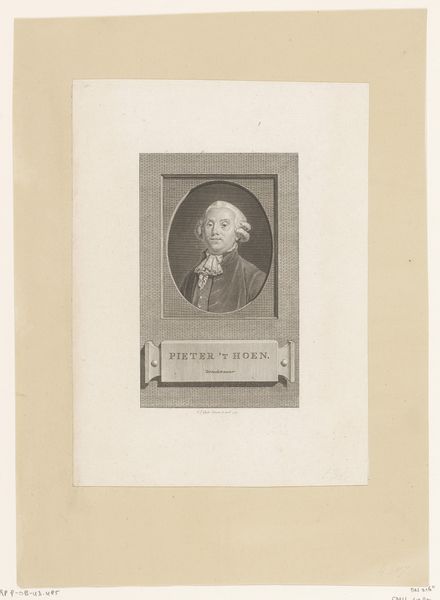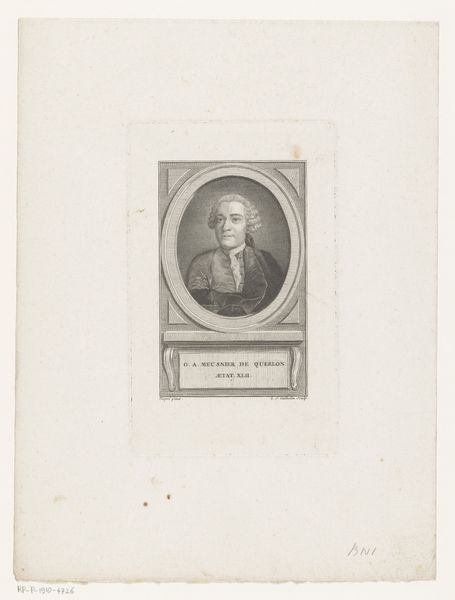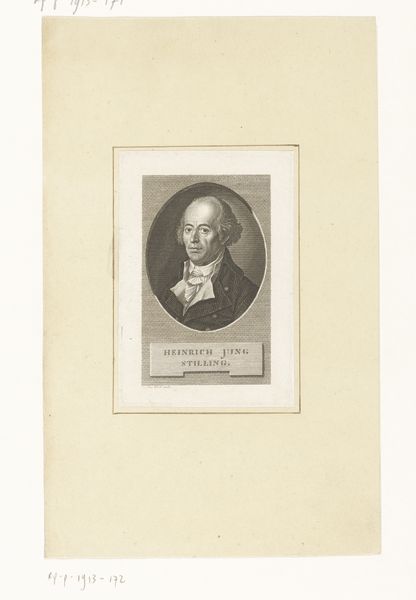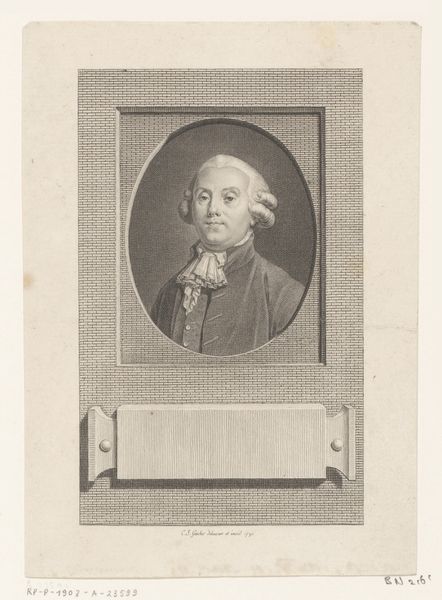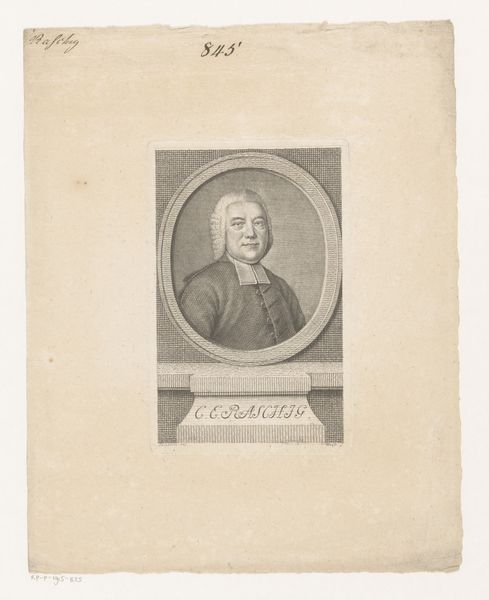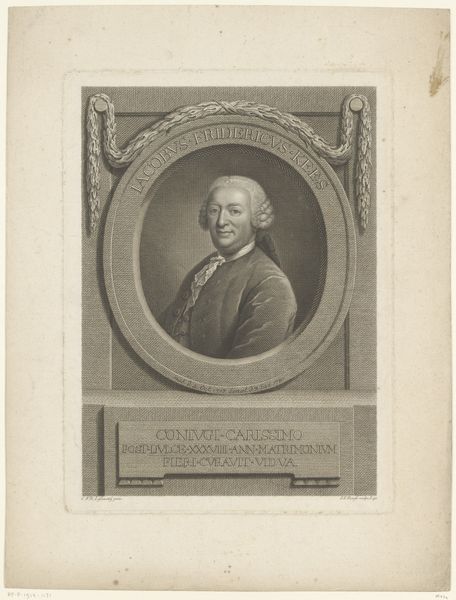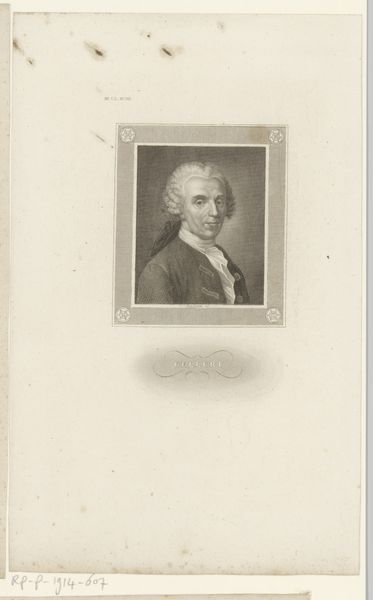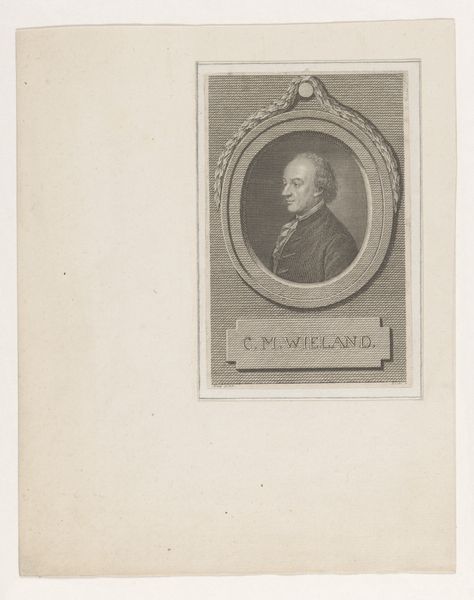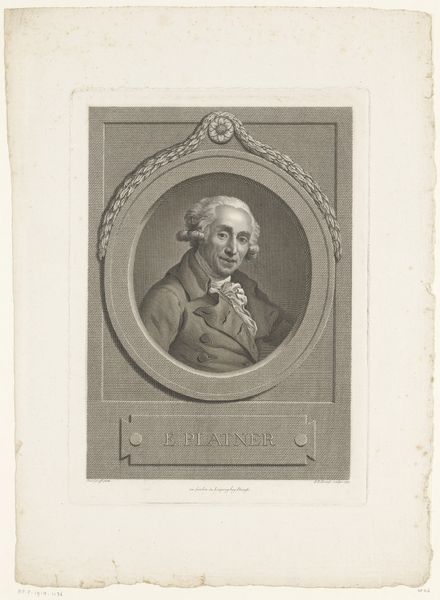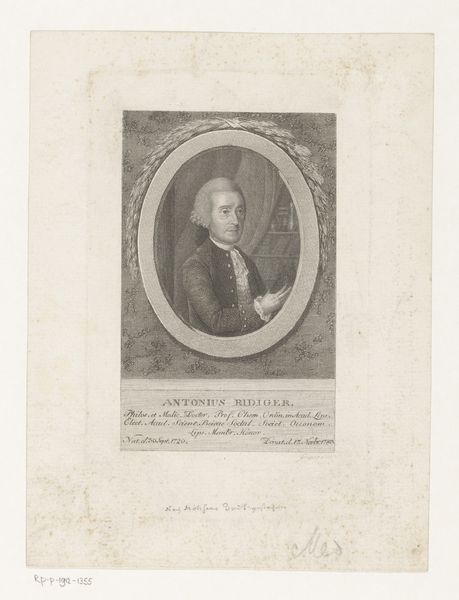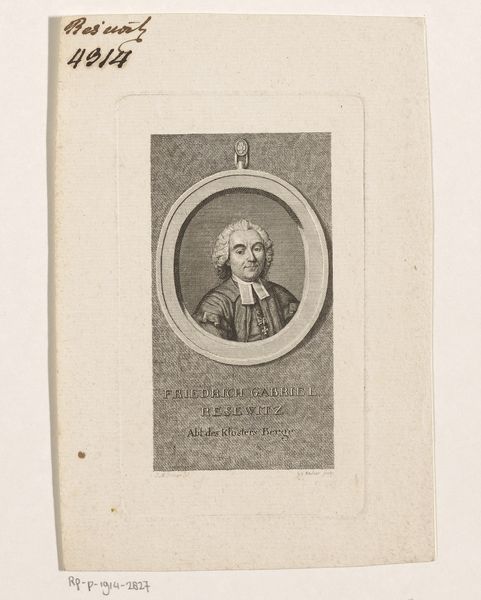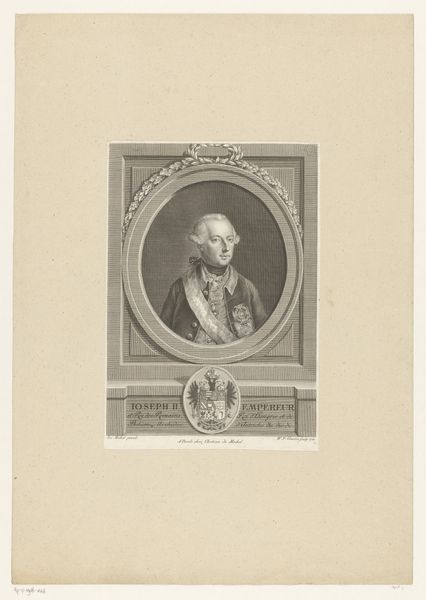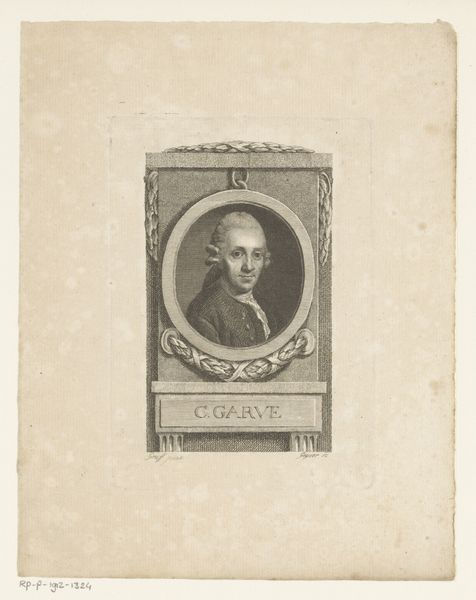
Dimensions: height 125 mm, width 85 mm
Copyright: Rijks Museum: Open Domain
Editor: Here we have Heinrich Pfenninger’s “Portret van Salomon Gessner,” an engraving from sometime between 1759 and 1815. The detail achieved through the engraving process is pretty remarkable, especially given the small scale. I find the sitter's gaze rather direct and… calculating. What do you see in this piece, from a historical perspective? Curator: I see more than just a portrait; I see a carefully constructed image intended to project a certain kind of social standing. Think about who could afford to commission or acquire prints like this. It was part of a visual economy linked to status, intellect, and belonging to a specific social sphere. This image served to circulate Gessner's likeness and, more importantly, his reputation amongst a literate and art-appreciating public. Editor: So it’s less about capturing the man’s true essence and more about crafting a public persona? Curator: Precisely. Consider the oval frame, a common feature in portraiture of the period, it invokes classical antiquity. The very act of commissioning or purchasing a print like this reinforced class divisions and hierarchies. And, given Gessner’s profession as a well-regarded writer and artist, it underscored the importance of the arts in shaping social discourse. Do you think that has changed a lot since then? Editor: Well, visual media are still powerful tools for crafting personas. Now it’s just, maybe, less exclusive given how cheap it is to create and disseminate imagery. Curator: I think you’ve hit on something crucial there. The relative democratization of image production in later eras fundamentally shifts the social function of portraiture, and images like this. It becomes less about establishing authority and more about participating in a broader visual culture. I hadn't considered that so clearly before. Editor: I hadn't either! Thinking about the shift in image-making technologies and its cultural impacts makes you think.
Comments
No comments
Be the first to comment and join the conversation on the ultimate creative platform.
